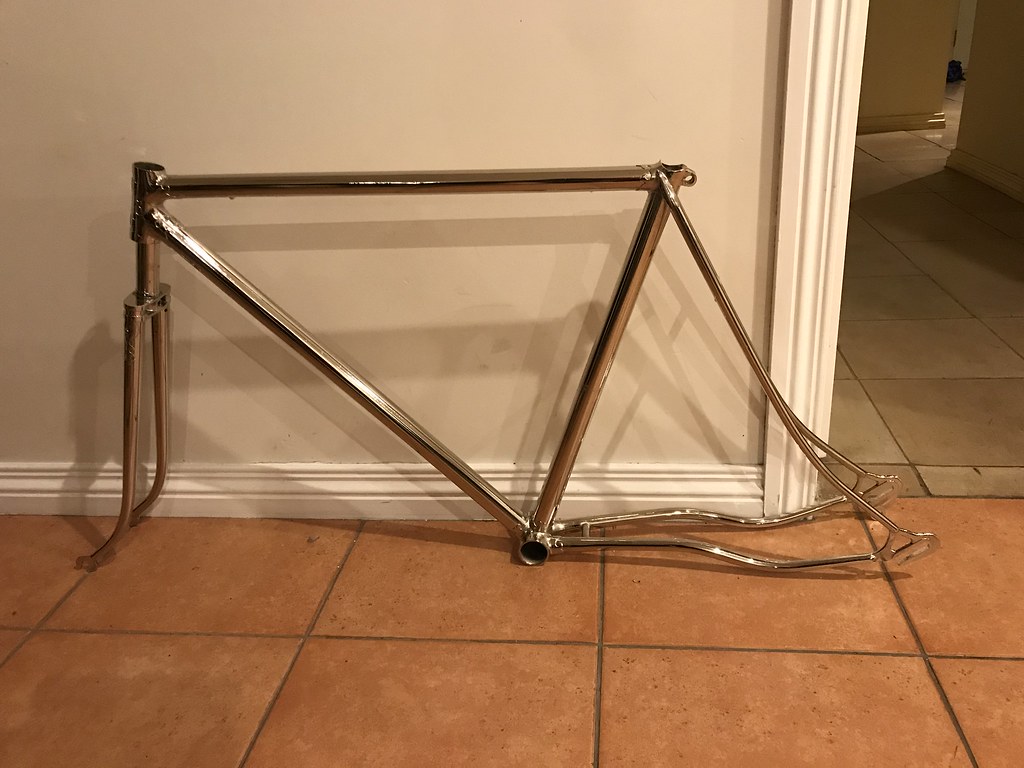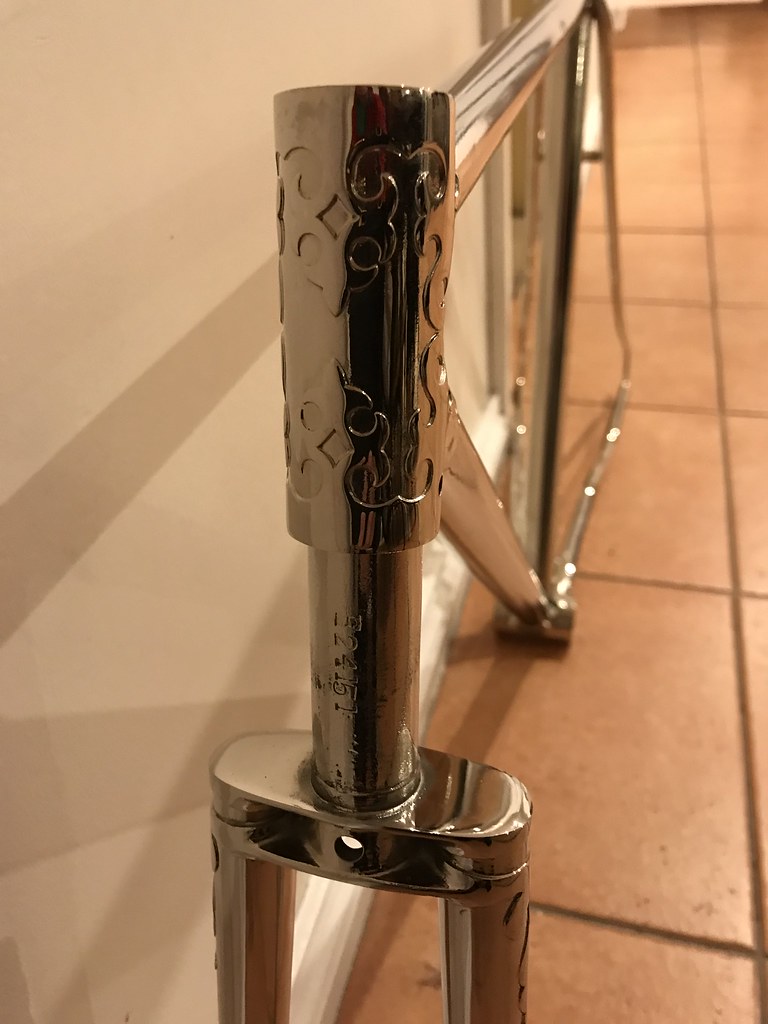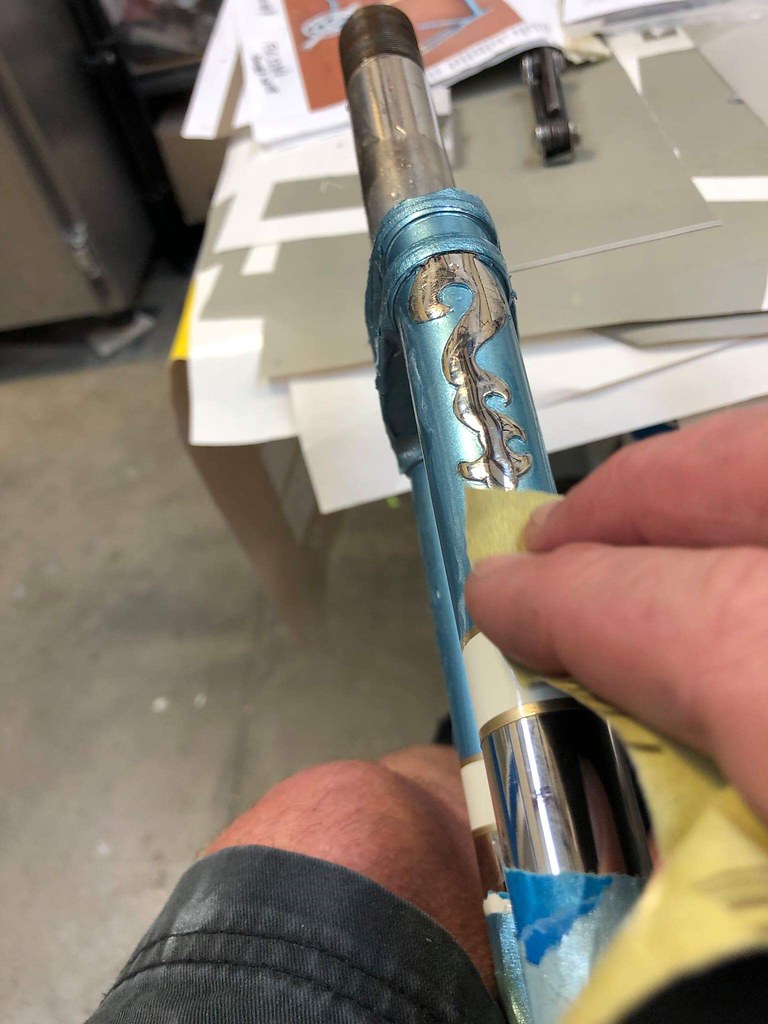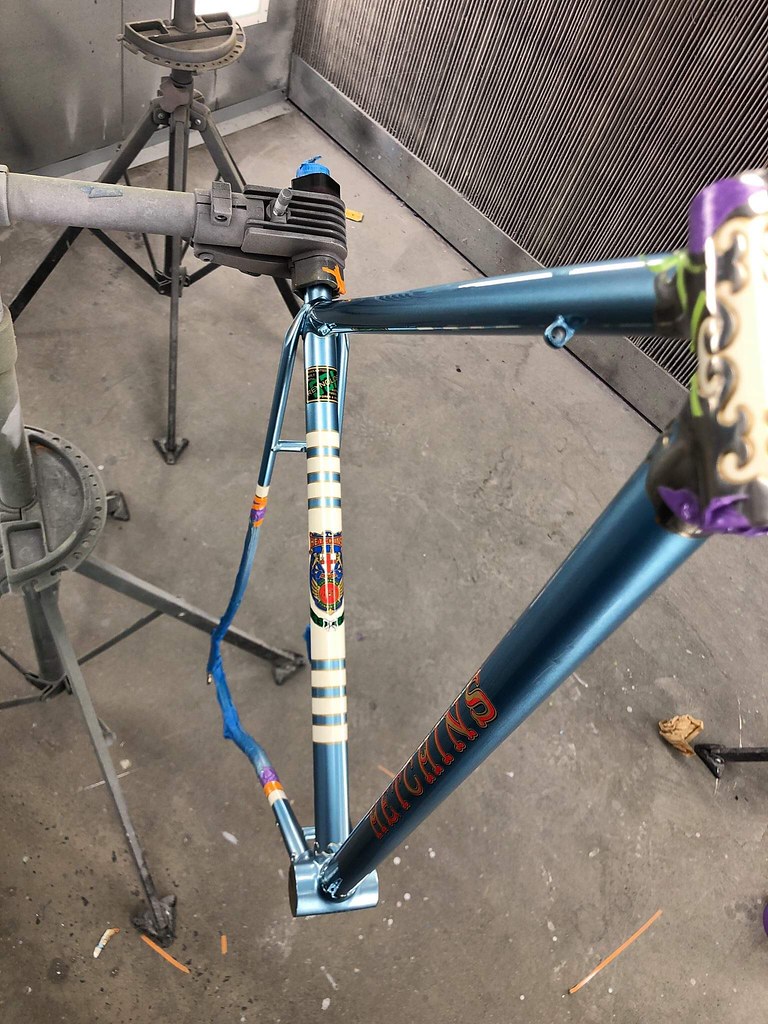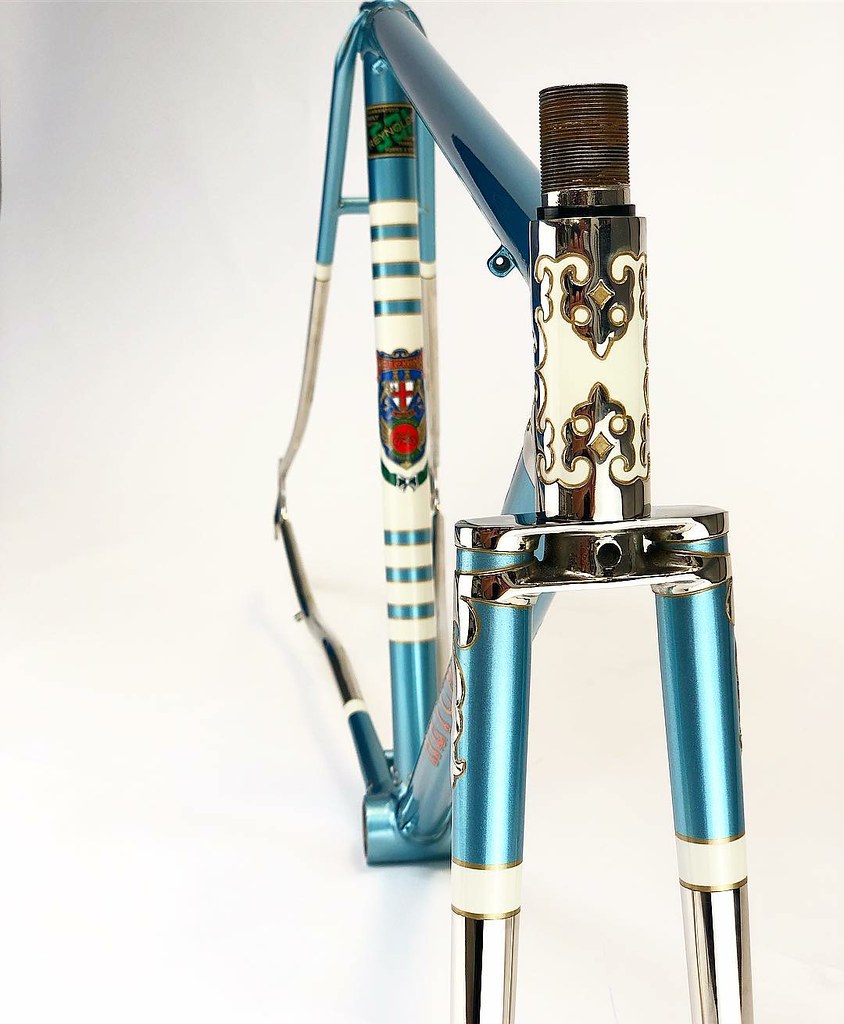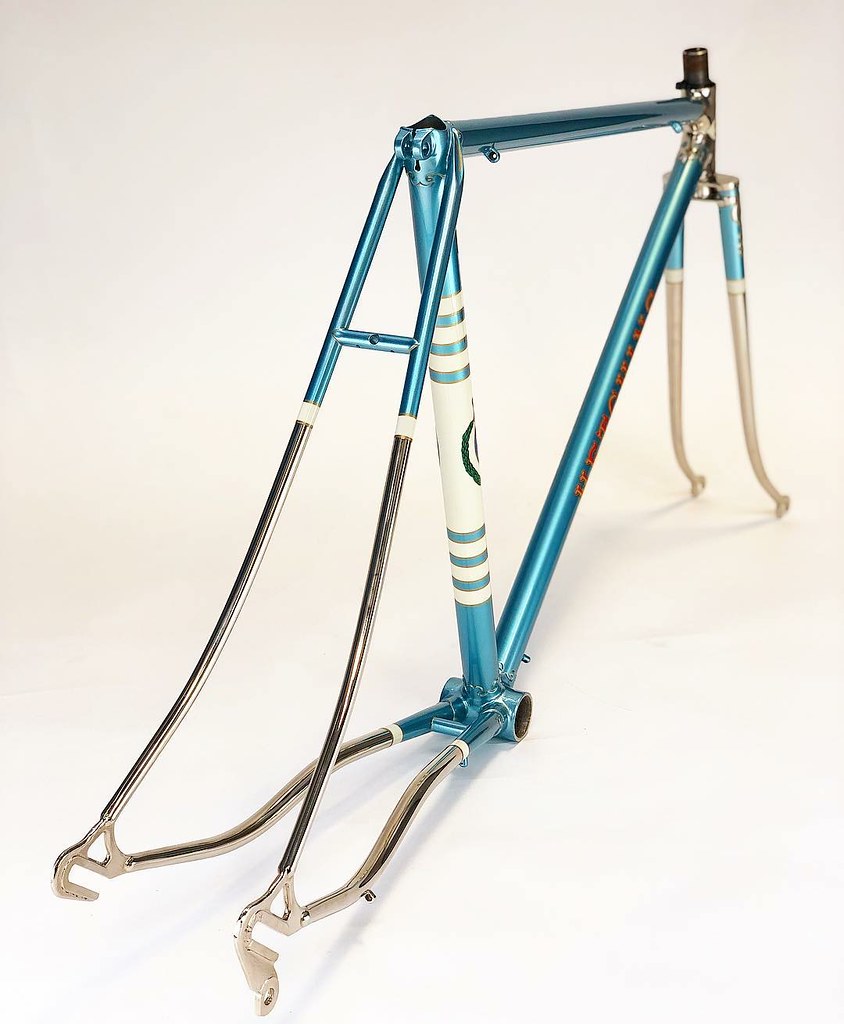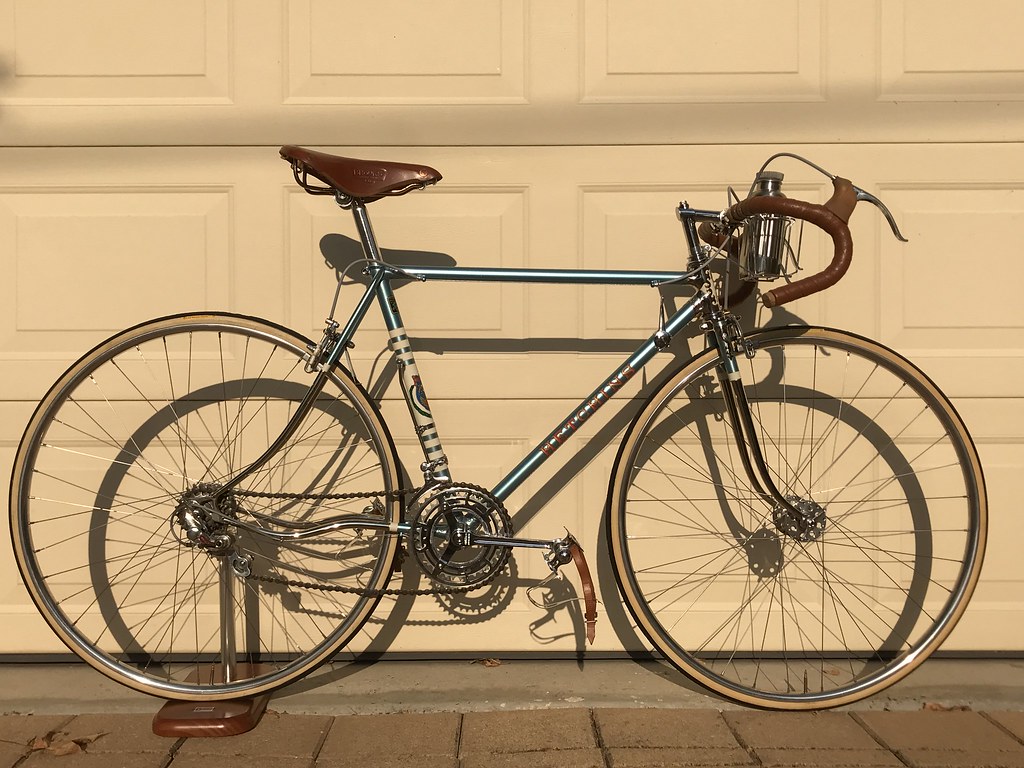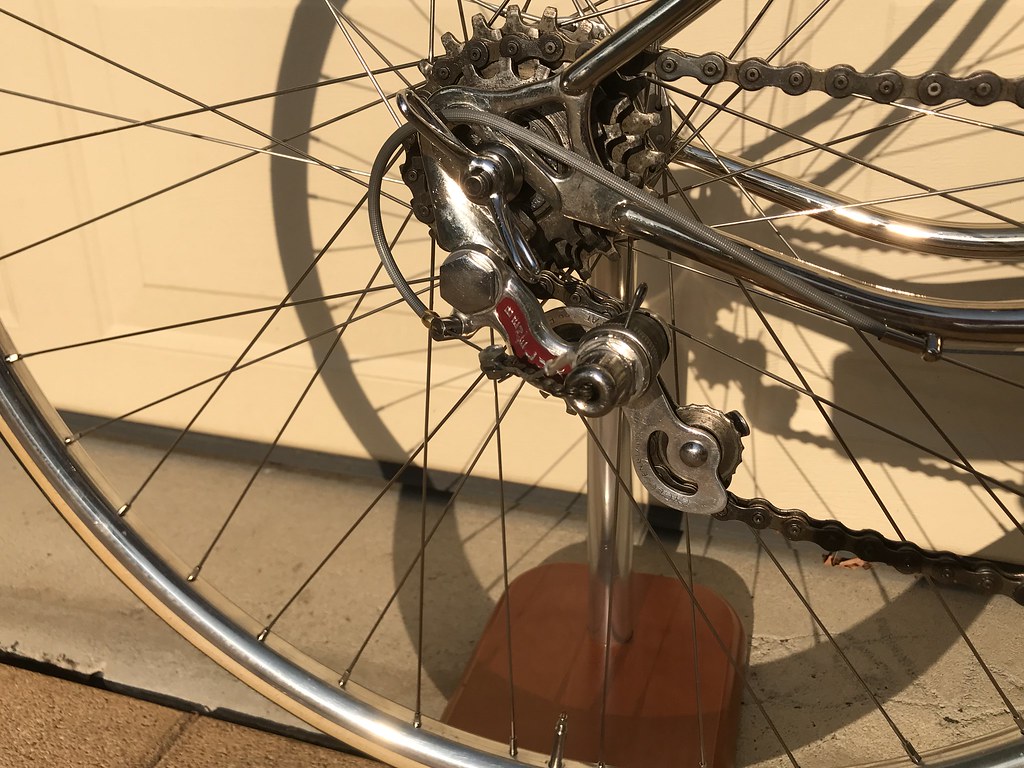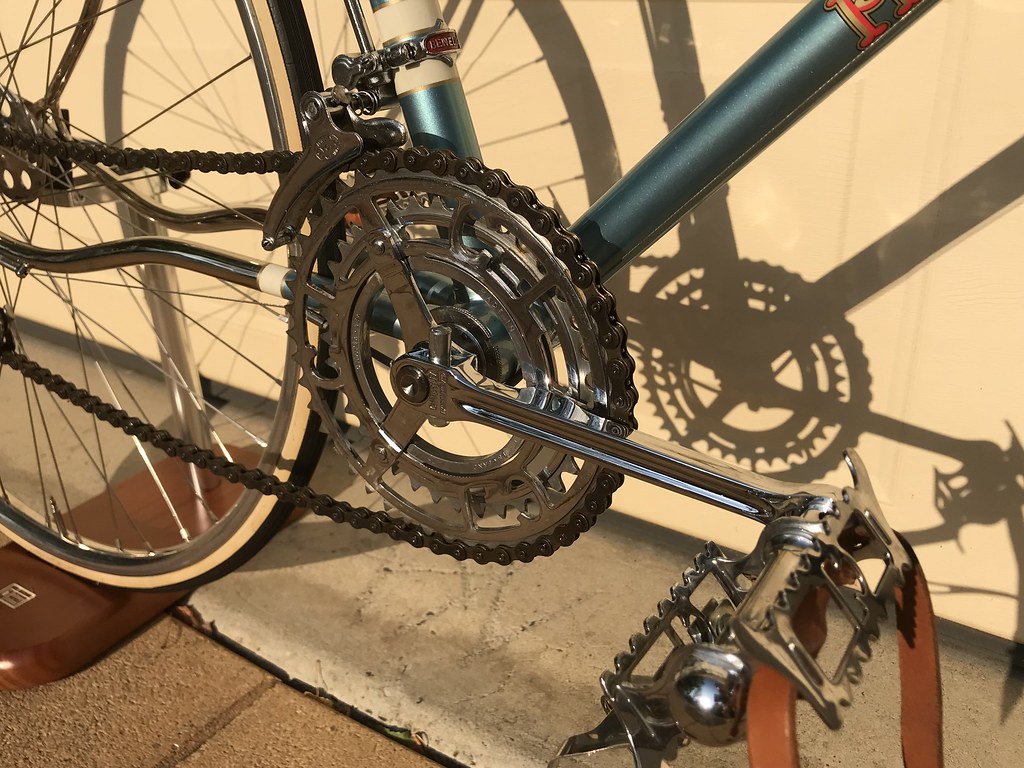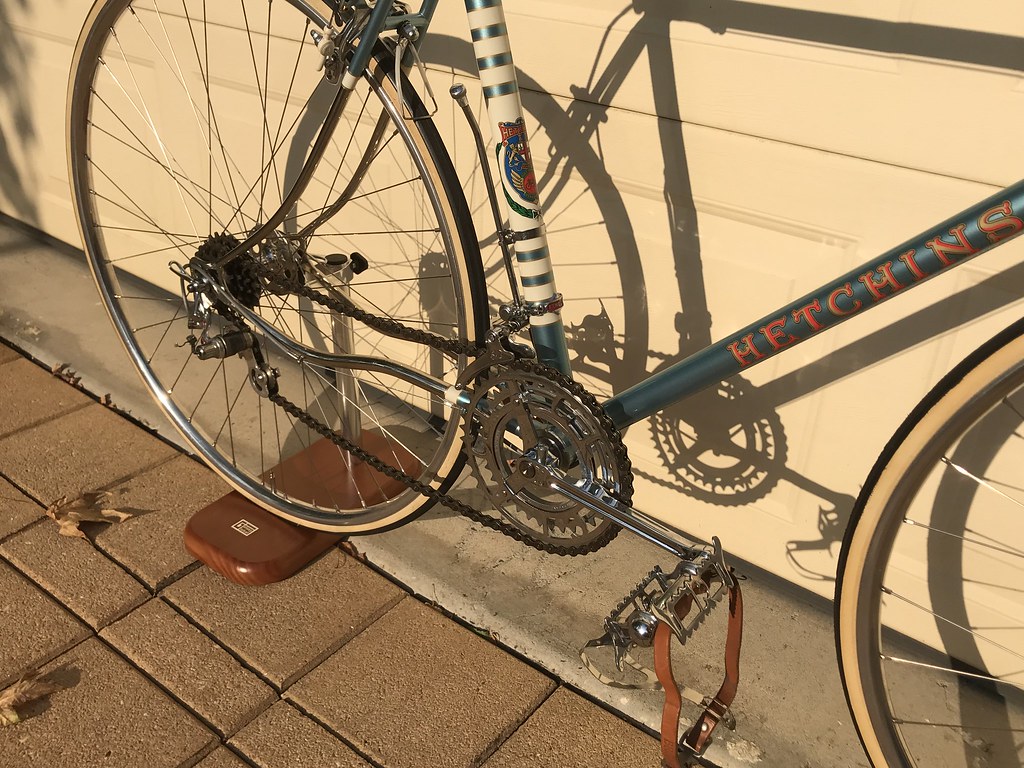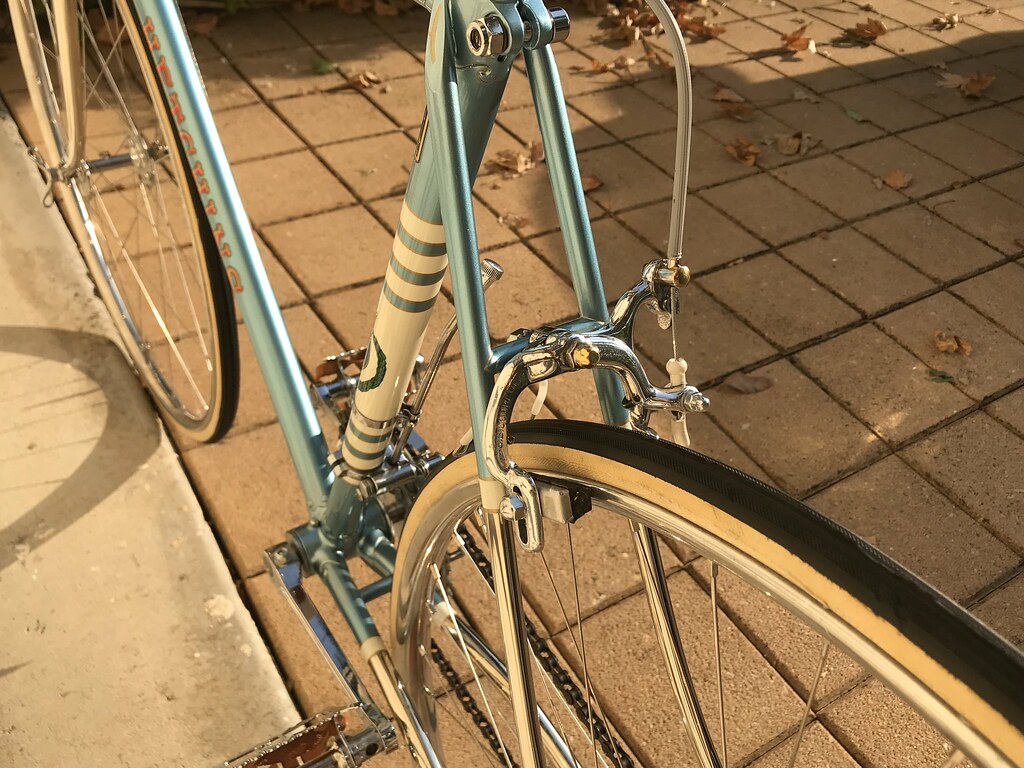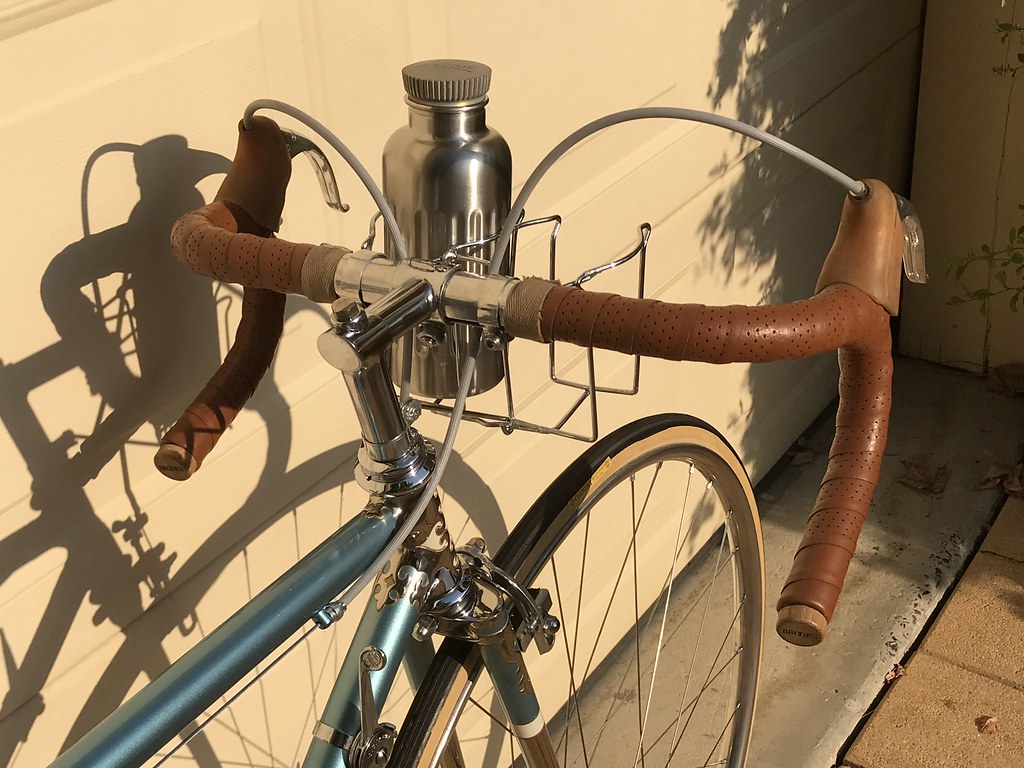I've always had a bit of a thing for the post war British bicycles with fancy lugwork, especially the Ephgraves and Hetchins. So I was delighted to spot a rather petite Hetchins Magnum Bonum on Ebay stripped to just a frame and fork. This looked like a project!
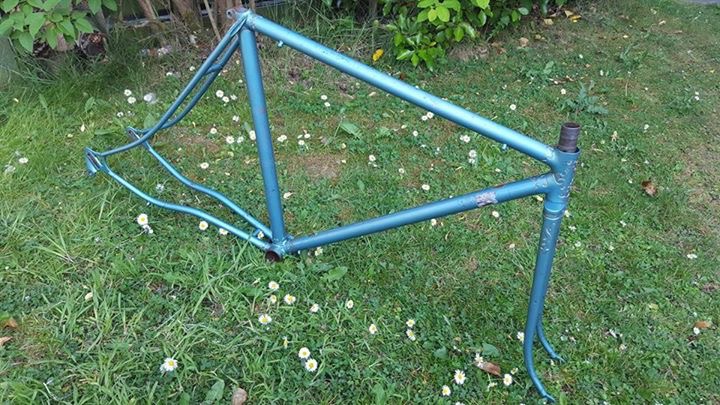
First thing was get to it home to Australia from sunny mother England and have a close look at it. I had some basic information from Hetchins.org as the frame had legible and and matching numbers on frame and fork.
“Hetchins Magnum Bonum E24151 is listed in the Hetchins ledgers as a Magnum Bonum. There are no further details, no price, no date of sale. This is quite unusual and does suggest a special provenance; frames gifted to employees or special friends were also listed without dates or sale prices. Nearby frame numbers are listed as having been sold in January and February 1952”
The particular specification of this frame – originally a complete lack of chrome, no mudguard eyelets and no markings or Hetchins logos of any kind confirms it’s heritage as a ‘racer’. Hetchins was known to assist competitive cyclists in and around London. Their production shows that in 1952 they manufactured 434 bicycle frames but only 398 were ‘sold’, with the other 36 being ‘gifted’. The vast majority of these ‘gifted’ bicycles are noted as ‘Magnum Bonum’ which was Hetchins preferred lug pattern for sponsor provided bikes.
Six were provided for the men’s team racing in the Tour of Britain that year, and it is thought that a further ten or so men’s and two or three ladies sized frames were produced to identical so called 'Tour of Britain' specification. Hetchins bicycles at that stage were only built to order.
The 'Tour of Britain' specification comprised front and rear Cyclo Benelux 4 speed derailleurs and was designed for stage racing and grand fondos. A key link to this frames provenance was the presence of Cyclo dropouts front and rear, with the rear dropouts being highly unusual in that they integrated a direct derailleur attachment 'hanger' bespoke and used only for the Cyclo Benelux rear derailleur in 1952 and 1953.
This frame also being of 'ladies geometry' therefore was highly unusual as very few ladies raced in ‘Continental’ races. This thankfully narrowed down the provenance of the bicycle substantially.
After much research and discussion, it is thought that this frame was most probably one used by Brenda Crowe, one of two ladies that were supported by Hetchins and known to have entered 'continental' races.
There is a photo of Brenda Crowe competing posted in a Time Trial in Britain on Hetchins.org which shows her riding a single speed frame of identical geometry fitted with a right hand operated rear brake only.
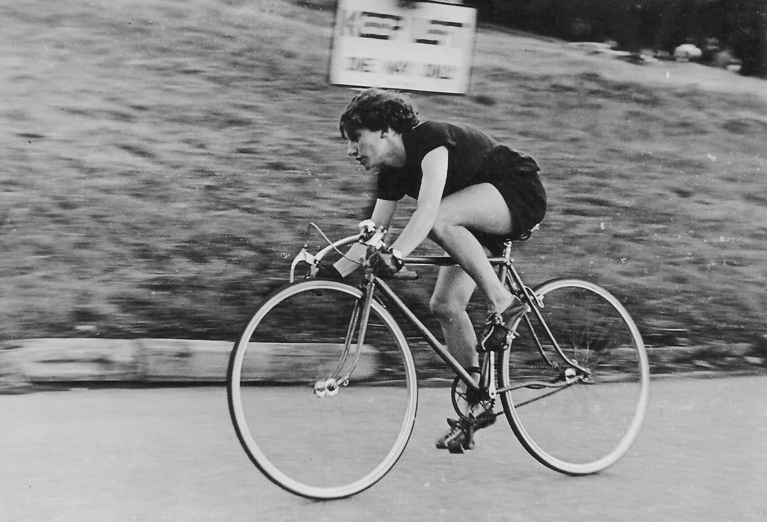
Hetchins has confirmed that the frame was a ‘Jack Denny’ production originally manufactured with rare non-eyelet Cyclo type 906/906a dropouts featuring an integrated rear derailleur hanger specific to the Cyclo Benelux derailleur, and originally set up with a 4 x 2 gearing arrangement as per both the 1951 and 1952 Tour of Britain winning machines – a feat repeated in 1953 as well.
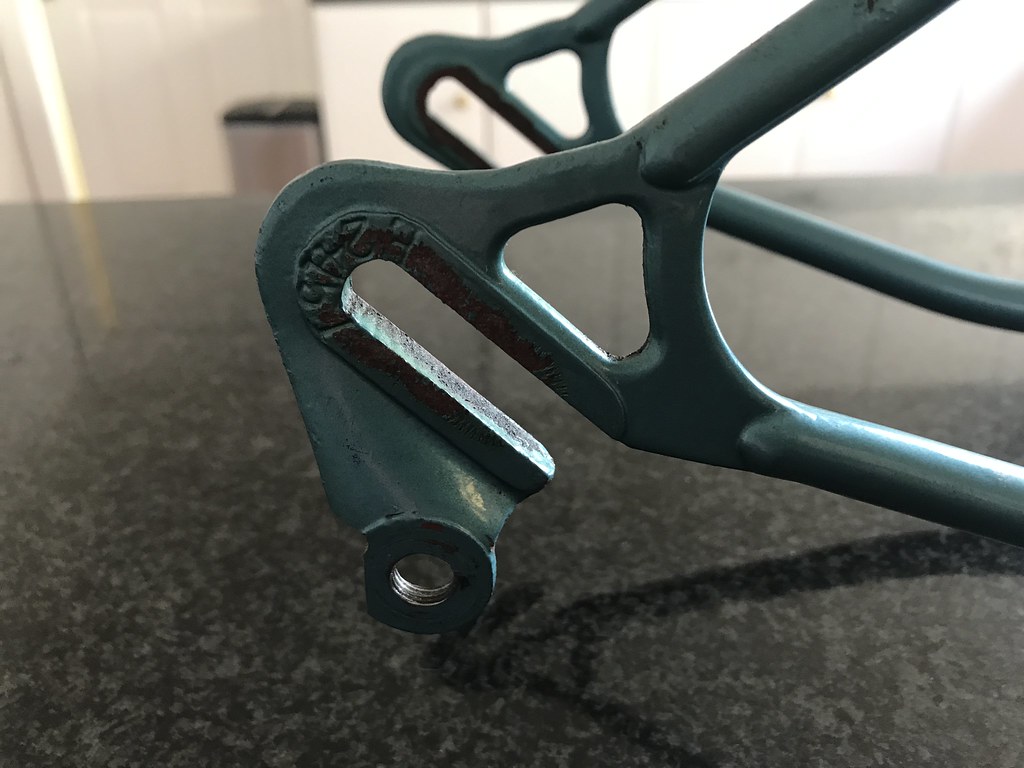
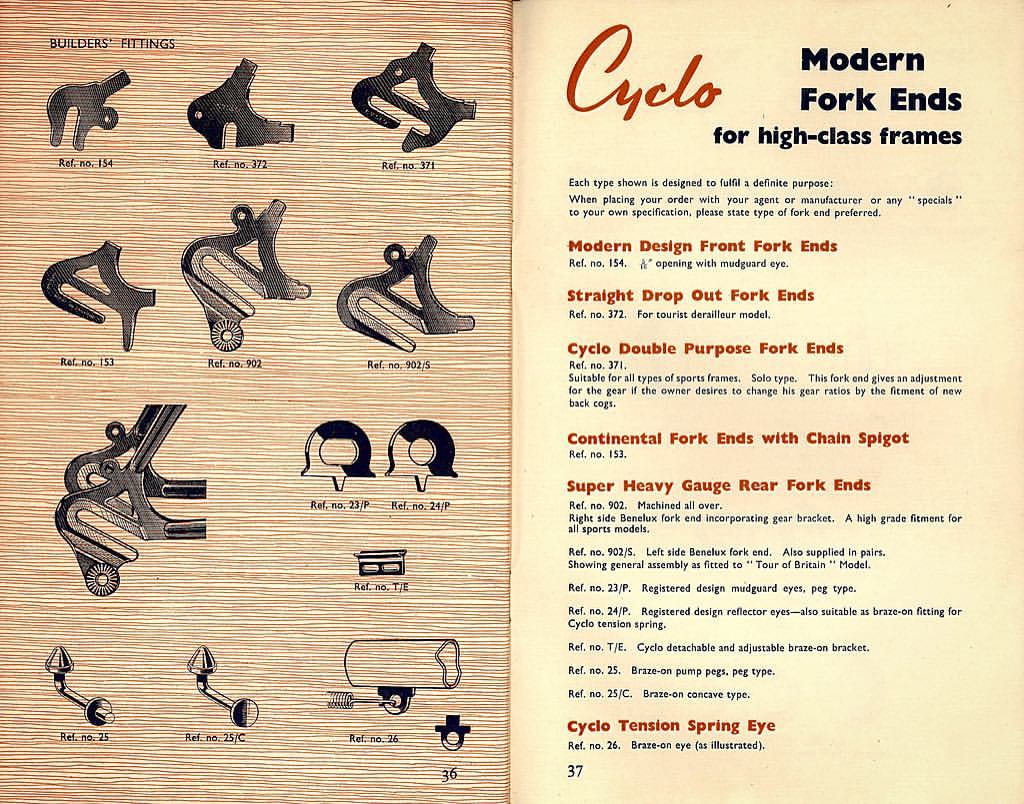
Hence this ‘gearset’ was marketed by Cyclo Gearsets alternatively as the ‘Benelux’, ‘Benelux Sport’ and ‘Tour of Britain’ gearset – all with slightly differing aesthetic details. The Tour of Britain gearset was identical to the Benelux Sport in all regards but featured a plain chrome rear derailleur pivot nut in lieu of the Sport’s enamelled badge.
The rod front derailleur is worthy of separate comment. In pre-race media coverage, the Hetchins bicycles were shown fitted with a French Cyclo lever front derailleur. However, race photographs show that a new design of rod shifter was used during competition. The 1952 Tour of Britain Hetchins bicycles are the first known use of this front derailleur that was not formally released to the public until the release of the Mark VII rear derailleur in about 1954.
As the frame showed some rust and bubbling under the paint it was decided to fully strip and restore the frame to 'as new condition'. Upon stripping, indentations were found on the frame which correlated with a single downtube shifter and two compression band indentations on the seat tube which correlated with a Cyclo rod front derailleur installation.
Together these provided a reasonable level of confidence that this frame had originally been configured as a 'Tour of Britain' specification Hetchins. Now, to find the correct parts.

First thing was get to it home to Australia from sunny mother England and have a close look at it. I had some basic information from Hetchins.org as the frame had legible and and matching numbers on frame and fork.
“Hetchins Magnum Bonum E24151 is listed in the Hetchins ledgers as a Magnum Bonum. There are no further details, no price, no date of sale. This is quite unusual and does suggest a special provenance; frames gifted to employees or special friends were also listed without dates or sale prices. Nearby frame numbers are listed as having been sold in January and February 1952”
The particular specification of this frame – originally a complete lack of chrome, no mudguard eyelets and no markings or Hetchins logos of any kind confirms it’s heritage as a ‘racer’. Hetchins was known to assist competitive cyclists in and around London. Their production shows that in 1952 they manufactured 434 bicycle frames but only 398 were ‘sold’, with the other 36 being ‘gifted’. The vast majority of these ‘gifted’ bicycles are noted as ‘Magnum Bonum’ which was Hetchins preferred lug pattern for sponsor provided bikes.
Six were provided for the men’s team racing in the Tour of Britain that year, and it is thought that a further ten or so men’s and two or three ladies sized frames were produced to identical so called 'Tour of Britain' specification. Hetchins bicycles at that stage were only built to order.
The 'Tour of Britain' specification comprised front and rear Cyclo Benelux 4 speed derailleurs and was designed for stage racing and grand fondos. A key link to this frames provenance was the presence of Cyclo dropouts front and rear, with the rear dropouts being highly unusual in that they integrated a direct derailleur attachment 'hanger' bespoke and used only for the Cyclo Benelux rear derailleur in 1952 and 1953.
This frame also being of 'ladies geometry' therefore was highly unusual as very few ladies raced in ‘Continental’ races. This thankfully narrowed down the provenance of the bicycle substantially.
After much research and discussion, it is thought that this frame was most probably one used by Brenda Crowe, one of two ladies that were supported by Hetchins and known to have entered 'continental' races.
There is a photo of Brenda Crowe competing posted in a Time Trial in Britain on Hetchins.org which shows her riding a single speed frame of identical geometry fitted with a right hand operated rear brake only.

Hetchins has confirmed that the frame was a ‘Jack Denny’ production originally manufactured with rare non-eyelet Cyclo type 906/906a dropouts featuring an integrated rear derailleur hanger specific to the Cyclo Benelux derailleur, and originally set up with a 4 x 2 gearing arrangement as per both the 1951 and 1952 Tour of Britain winning machines – a feat repeated in 1953 as well.


Hence this ‘gearset’ was marketed by Cyclo Gearsets alternatively as the ‘Benelux’, ‘Benelux Sport’ and ‘Tour of Britain’ gearset – all with slightly differing aesthetic details. The Tour of Britain gearset was identical to the Benelux Sport in all regards but featured a plain chrome rear derailleur pivot nut in lieu of the Sport’s enamelled badge.
The rod front derailleur is worthy of separate comment. In pre-race media coverage, the Hetchins bicycles were shown fitted with a French Cyclo lever front derailleur. However, race photographs show that a new design of rod shifter was used during competition. The 1952 Tour of Britain Hetchins bicycles are the first known use of this front derailleur that was not formally released to the public until the release of the Mark VII rear derailleur in about 1954.
As the frame showed some rust and bubbling under the paint it was decided to fully strip and restore the frame to 'as new condition'. Upon stripping, indentations were found on the frame which correlated with a single downtube shifter and two compression band indentations on the seat tube which correlated with a Cyclo rod front derailleur installation.
Together these provided a reasonable level of confidence that this frame had originally been configured as a 'Tour of Britain' specification Hetchins. Now, to find the correct parts.
